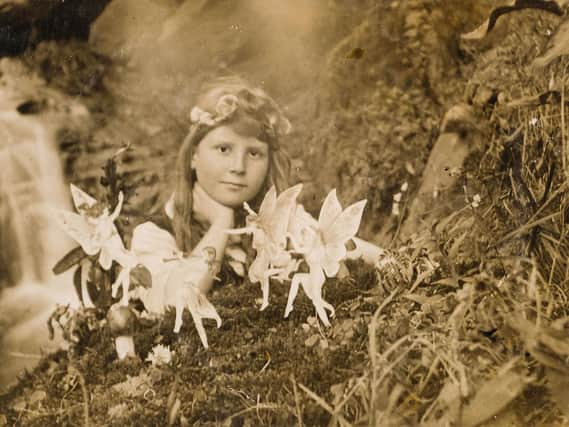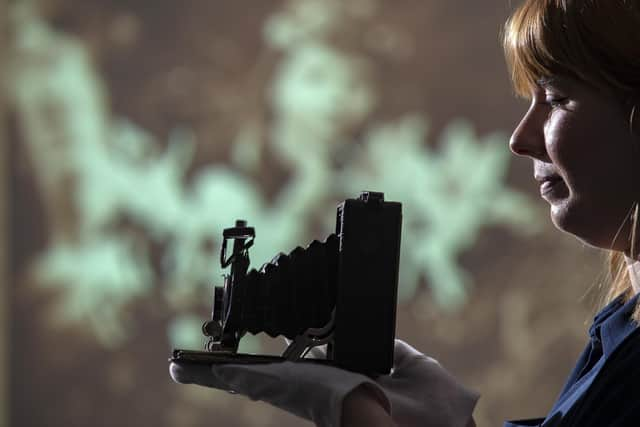National Science and Media Museum in Bradford explores Cottingley Fairies links to technology and the supernatural


It was a major hoax, albeit one that foxed Sir Arthur Conan Doyle, but the Cottingley Fairies story of bogus pictures taken by young cousins in Yorkshire in the early 20th century is one that still intrigues and charms today.
And its legend is forming part of events involving Bradford’s National Science and Media Museum which are exploring the relationship between technological innovation and “alternative spiritual belief”.
Advertisement
Hide AdAdvertisement
Hide AdThese aim to uncover how unorthodox spiritual believers – and sceptics – have used new technologies and scientific instruments such as photography, wireless transmission, telegraphy and tape recorders to test, affirm or debunk the existence of an “unseen world”.


The events are part of a project titled The Media of Mediumship: Encountering the Material Culture of Modern Occultism in Britain’s Science, Technology, and Magic Collections. The one-year project, which has already started, is a collaboration between the Science Museum Group – of which the site in Bradford is part – Senate House Library and the University of Stirling, with funding from the Arts and Humanities Research Council.
The National Science and Media Museum in Bradford houses a remarkable collection of objects exploring the history of photography, film, television and sound, including objects with links to occultism.
One such collection, which will form the focus of a talk by Professor Christine Ferguson planned for Thursday, September 30, includes objects linked to the famous Cottingley Fairies, including the cameras gifted to cousins Elsie Wright and Frances Griffiths by Conan Doyle and Theosophist Edward Gardner.
Advertisement
Hide AdAdvertisement
Hide AdPictures of the ‘fairies’ were taken in July and September 1917 by teenager Elsie and nine-year-old Frances in the village of Cottingley, near Bingley, in West Yorkshire.
Borrowing Elsie’s father’s Midg quarter-plate camera, and with the use of coloured paper cut-outs and hat pins, they staged their scenes near the stream at the end of their garden.
While Elsie’s father, a keen amateur photographer who developed the prints, never doubted they were fakes, his wife Polly was apparently a believer and in 1919 took the prints to show members of the Theosophical Society in Bradford. It was during 1920 that Conan Doyle, a leading spiritualist believer, became aware of the photographs and wanted to use them for an article on fairies he had been commissioned to write for The Strand Magazine.
“Our programme demonstrates the prevailing desire of humans to put the ghost back in the machine, to enchant seemingly secular and rational forms of new technology as they emerge,” says Prof Ferguson.
Advertisement
Hide AdAdvertisement
Hide Ad“In the 19th century, belief in spirits and fairies was sometimes seen as a throwback to an earlier, more superstitious, pre-modern time. But this interpretation failed to explain why so many spiritualists and occultists embraced new technologies as eager early adopters, deploying radios, cameras, recording devices, typewriters, and the like, in their magical practice.
"We aim to tell both their story, and that of the scientific investigators and sceptics who used these same instruments to debunk the supernatural.”
The museum also has a collection of spirit photography, including pictures by the notable 20th century medium William Hope, whose works will form the focus of a talk by the Science Museum Group’s Dr Efram Sera-Shriar at the Bradford site’s recurring Café Scientifique event on Thursday January 27.
Details of the full programme can be viewed at www.scienceandmediamuseum.org.uk/whats-on/media-mediumship.
Comment Guidelines
National World encourages reader discussion on our stories. User feedback, insights and back-and-forth exchanges add a rich layer of context to reporting. Please review our Community Guidelines before commenting.